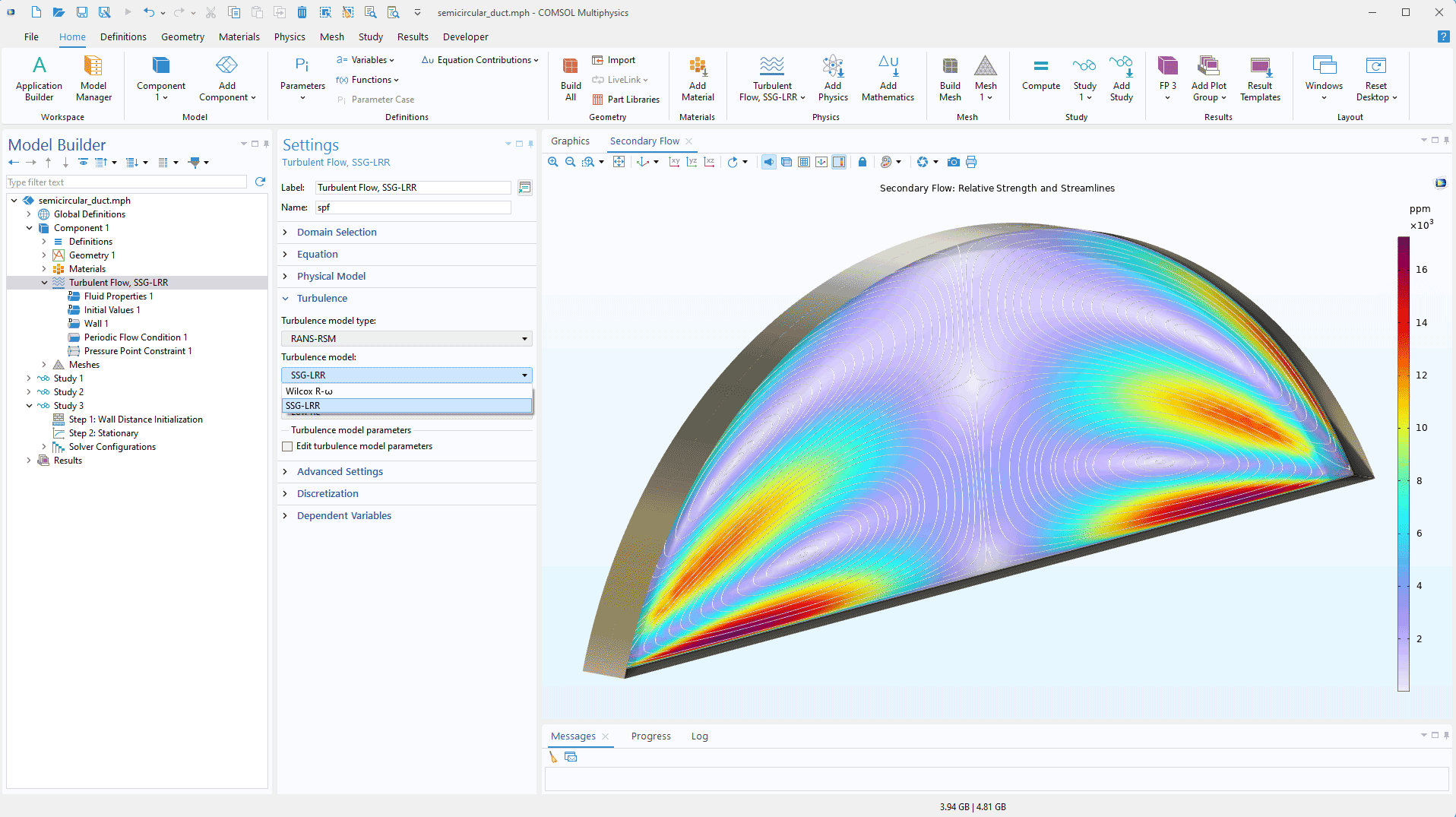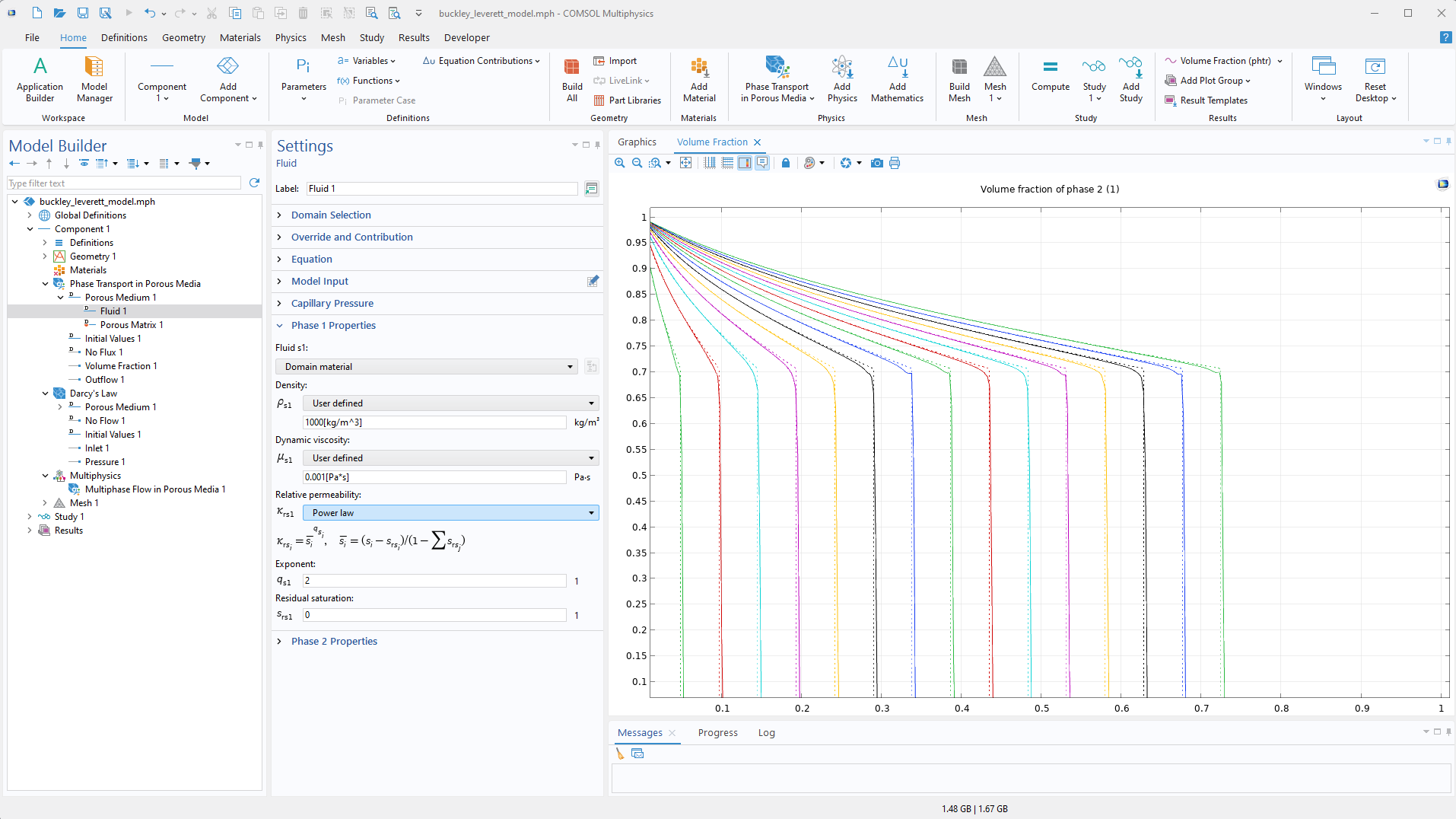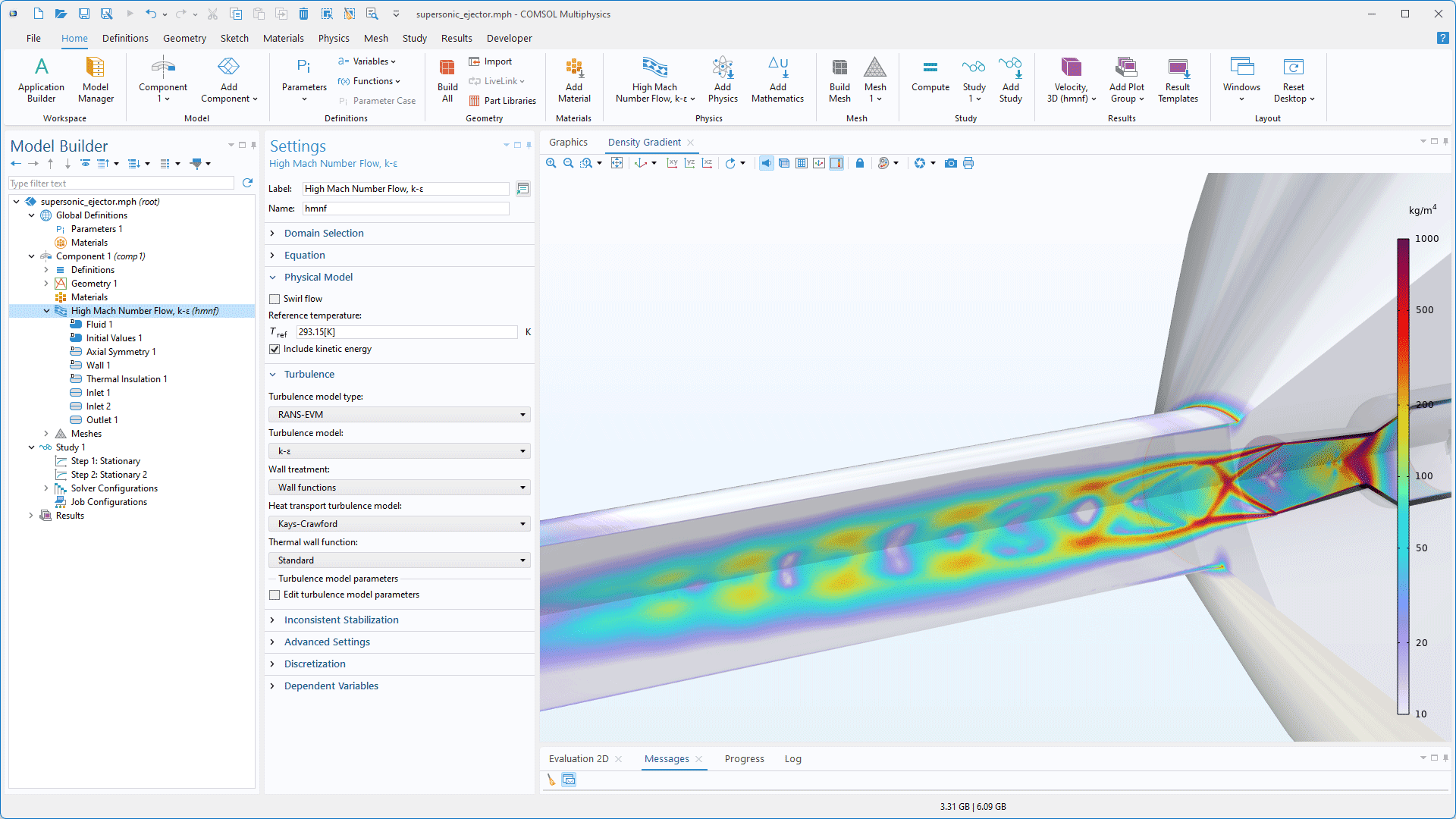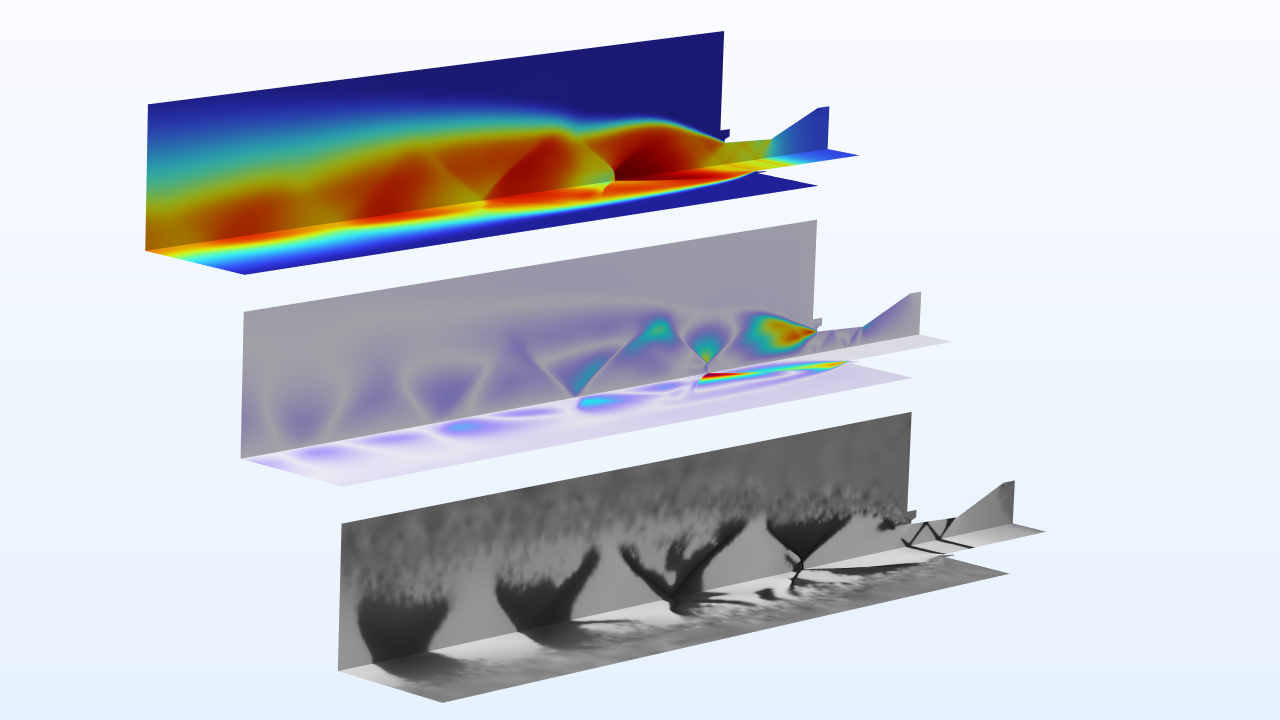Aggiornamenti CFD Module
Modelli di turbolenza a stress di Reynolds
Le nuove interfacce Turbulent Flow, Wilcox R-ω e Turbulent Flow, SSG-LRR (Speziale-Sarkar-Gatsk/Launder-Reece-Rodi) offrono una chiusura di ordine superiore, il che le rende particolarmente efficaci per la modellazione dei flussi secondari nei condotti, dei flussi con forte vorticità o rotazione media e dei flussi con una significativa curvatura della linea di flusso media. A differenza dei modelli di eddy-viscosity (EVM), queste interfacce non presuppongono che le sollecitazioni di Reynolds siano allineate con la velocità di deformazione media, portando a risultati più accurati in condizioni di flusso complesse. I due modelli di stress di Reynolds, Wilcox R-ω e SSG-LRR, differiscono principalmente per il modo in cui modellano il termine pressione-deformazione e il tasso di dissipazione specifico in campo lontano.

Migrazione indotta dal taglio nel flusso multifase disperso
Nelle sospensioni concentrate, le collisioni irreversibili delle particelle portano alla migrazione delle stesse verso regioni con velocità di taglio inferiori, un fenomeno utilizzato in processi come il frazionamento delle particelle e la microfiltrazione. Ad esempio, nel flusso di canale guidato dalla pressione di una miscela neutralmente galleggiante, le particelle tendono ad aggregarsi al centro del canale. La nuova opzione Include shear-induced migration, ora disponibile nell'accoppiamento multifisico Mixture Model, supporta più specie e migliora l'accuratezza di tali simulazioni. Il tutorial Two-Phase Flow Modeling of a Dense Suspension è stato aggiornato per utilizzare questa nuova funzione.
Energia cinetica e condizione di ingresso subsonico nel flusso ad alto numero di Mach
Per migliorare la conservazione dell'energia, la nuova opzione Include kinetic energy nelle interfacce High Mach Number Flow fornisce una rappresentazione più accurata del lavoro viscoso. Sebbene le differenze siano spesso minime, in alcuni casi questa opzione consente di ottenere una conservazione dell'energia significativamente migliore. Inoltre, per bassi numeri di Mach in ingresso, come quelli dei dispositivi di flusso interno quali gli eiettori, è stata aggiunta alla funzione Inlet la nuova opzione Subsonic, che offre un'alternativa meno impegnativa dal punto di vista computazionale all'opzione Characteristics based.
Nuove funzionalità nelle interfacce per il trasporto di fase
Alle interfacce Phase Transport è stata aggiunta una nuova condizione al contorno Boundary Mass Source. Questa nuova funzione tiene conto del consumo o della produzione di fasi diverse a causa di reazioni o altri processi fisici ai contorni. Le condizioni al contorno saranno ora più facili da impostare quando, ad esempio, il trasporto di fase è accoppiato a reazioni superficiali. Inoltre, per contribuire a unificare la nomenclatura nelle diverse interfacce fisiche, i nuovi nodi Fluid e Porous Medium hanno sostituito i nodi Phase and Transport Properties e Phase and Porous Media Transport Properties precedentemente disponibili nelle interfacce Phase Transport.
Opzione legge di potenza per le permeabilità relative
La funzione Porous Medium dell'interfaccia Phase Transport in Porous Media include ora una nuova opzione Power law, che facilita l'implementazione di permeabilità relative basate su espressioni power law. Questo miglioramento semplifica l'impostazione e la modellazione del comportamento della permeabilità nelle simulazioni di mezzi porosi.

Modelli di risultato nelle interfacce di trasporto di specie chimiche
La creazione di grafici utili e visivamente accattivanti di sistemi in reazione può richiedere molto tempo, poiché spesso ci sono molti reagenti e quindi molti campi di concentrazione da graficare. Per risparmiare tempo, nelle interfacce di Chemical Species Transport sono disponibili diversi nuovi Result Templates. Tra questi, sono ora disponibili modelli di matrice di grafici che includono fino a quattro concentrazioni di specie contemporaneamente nella finestra Graphics. I Result Templates sono disponibili per tutte le interfacce Chemical Species Transport, indipendentemente dal prodotto aggiuntivo, ma sono particolarmente utili per le interfacce di trasporto multicomponente incluse nei moduli per l'ingegneria chimica e nel Porous Media Flow Module, nel Subsurface Flow Module e nel Microfluidics Module.
Nuovo tutorial
La versione 6.3 di COMSOL Multiphysics® introduce un nuovo tutorial nel CFD Module.


